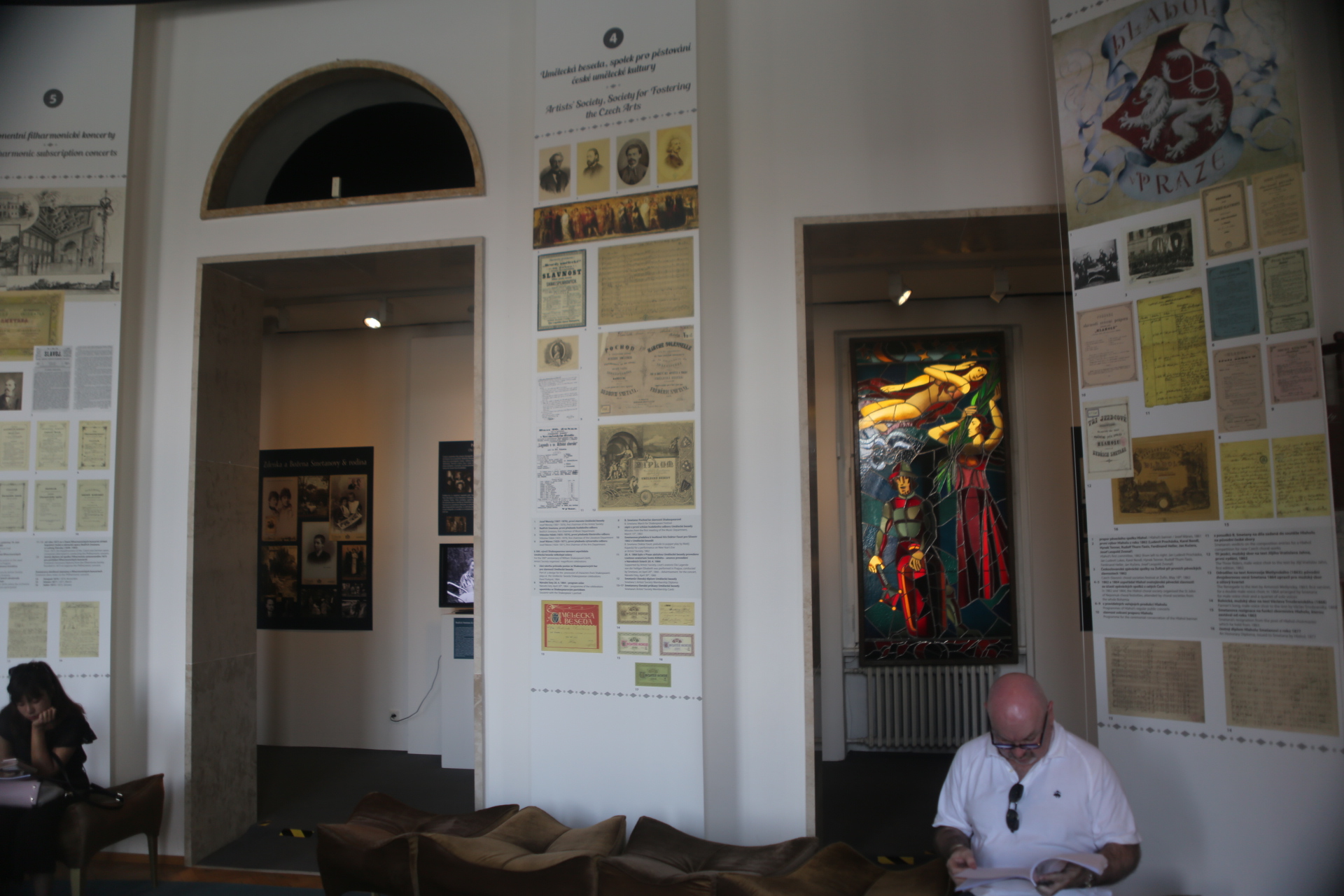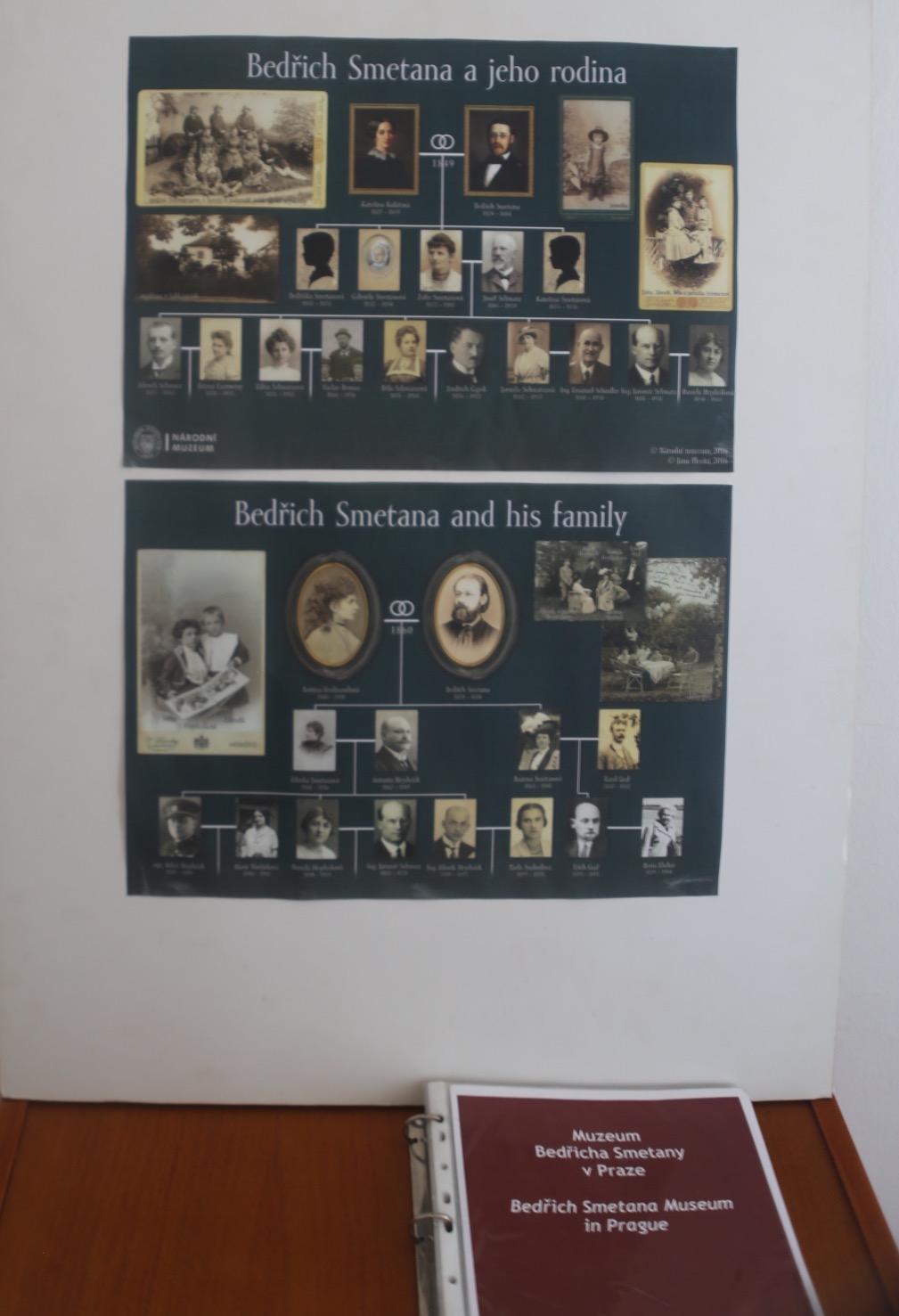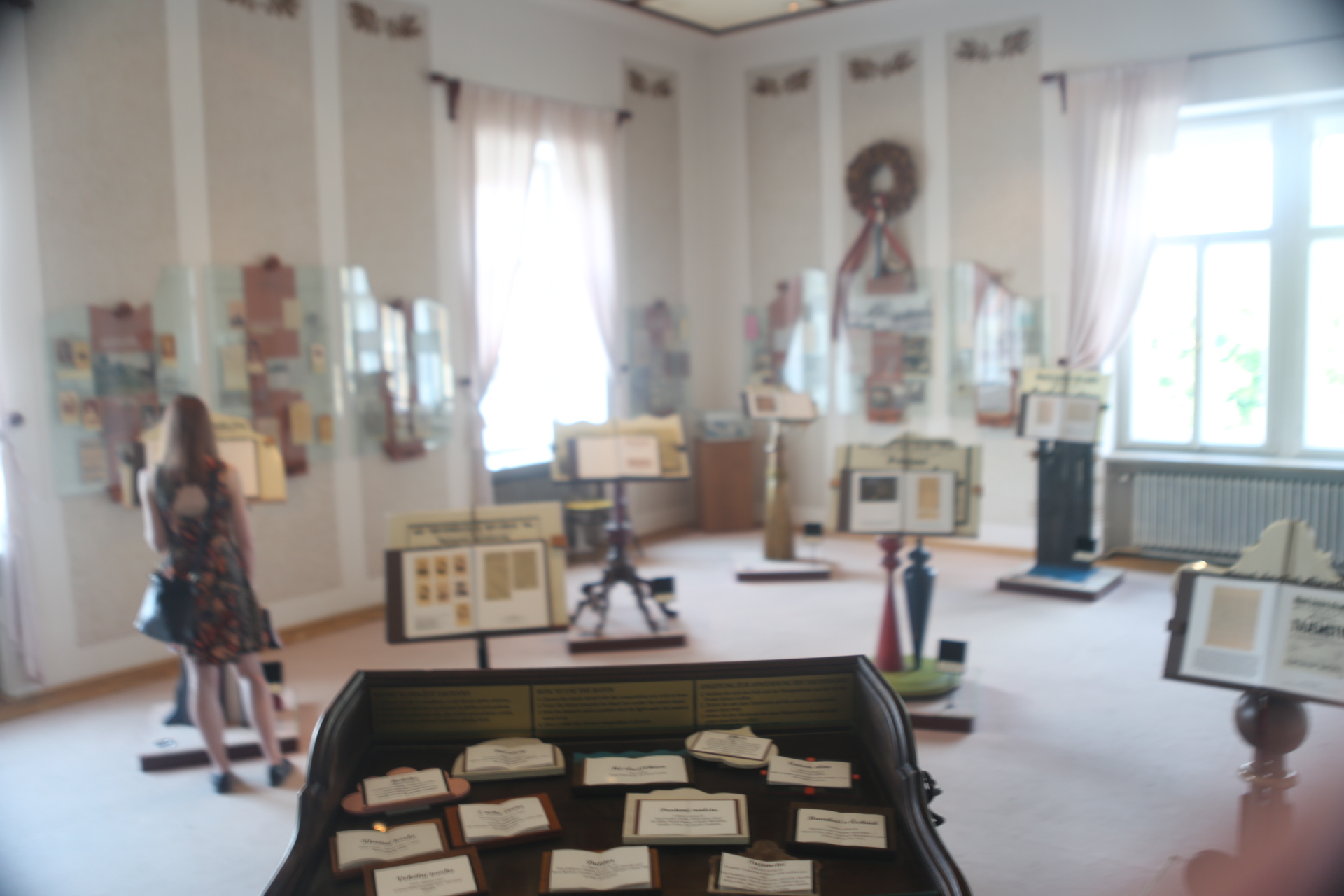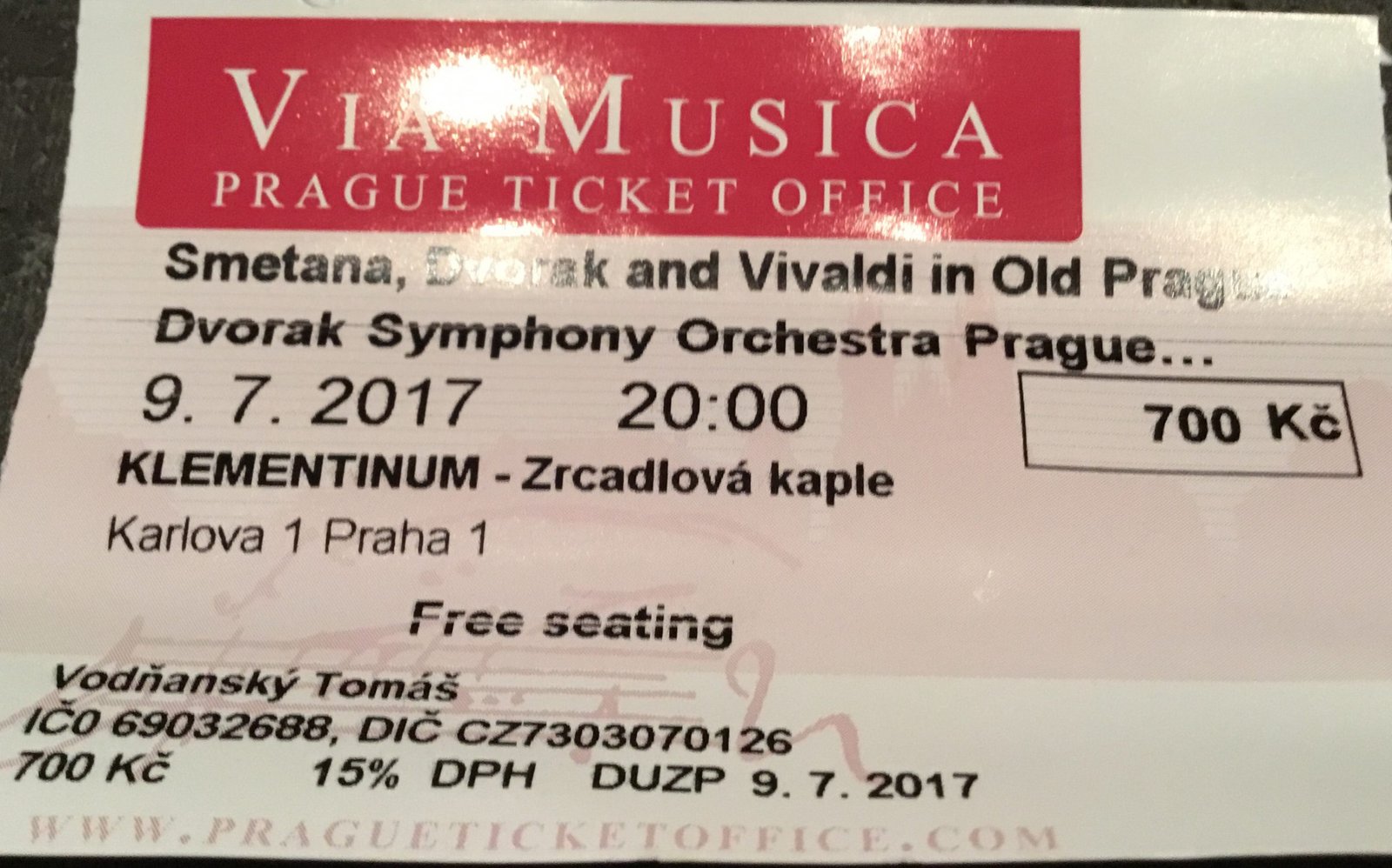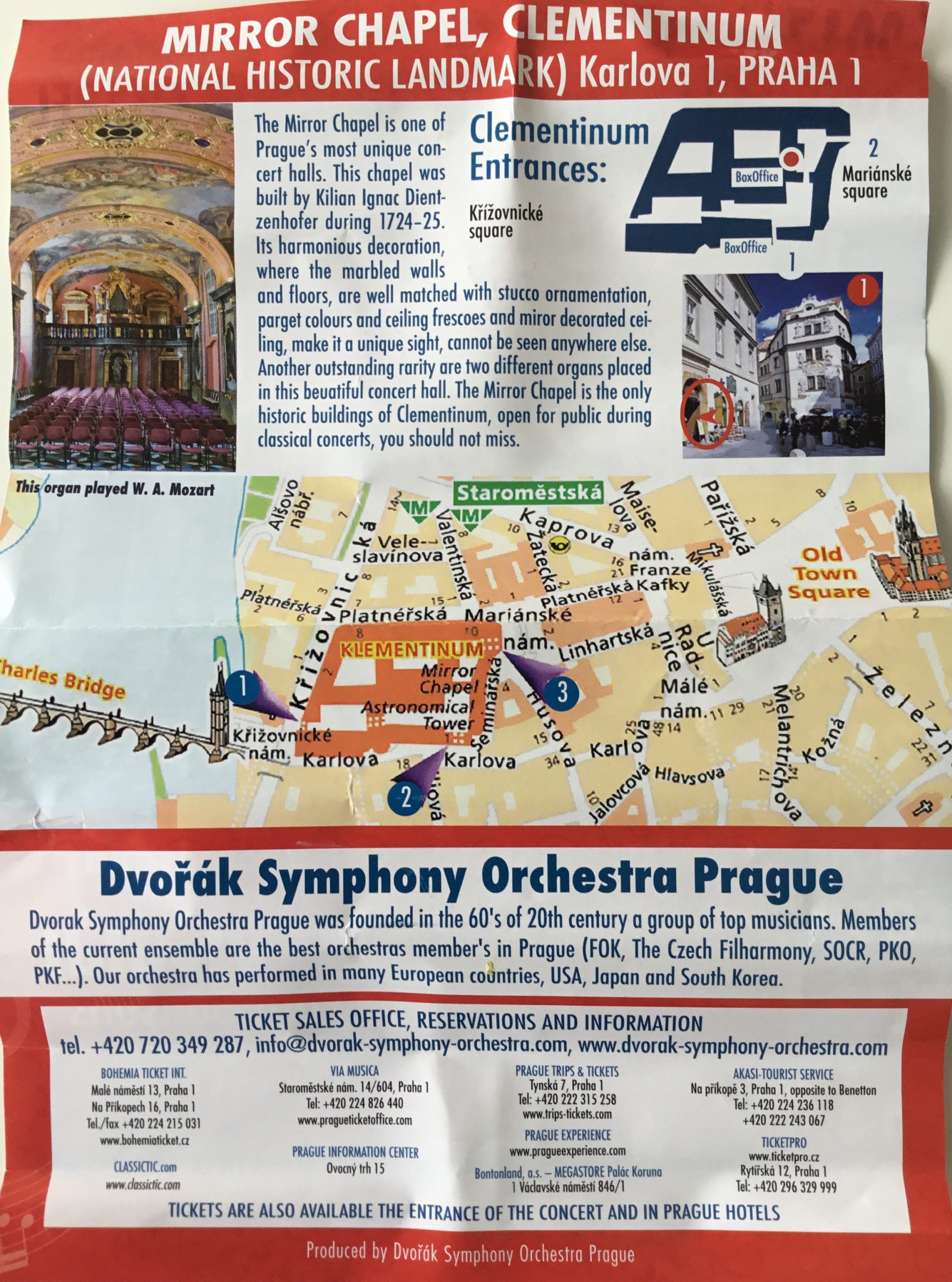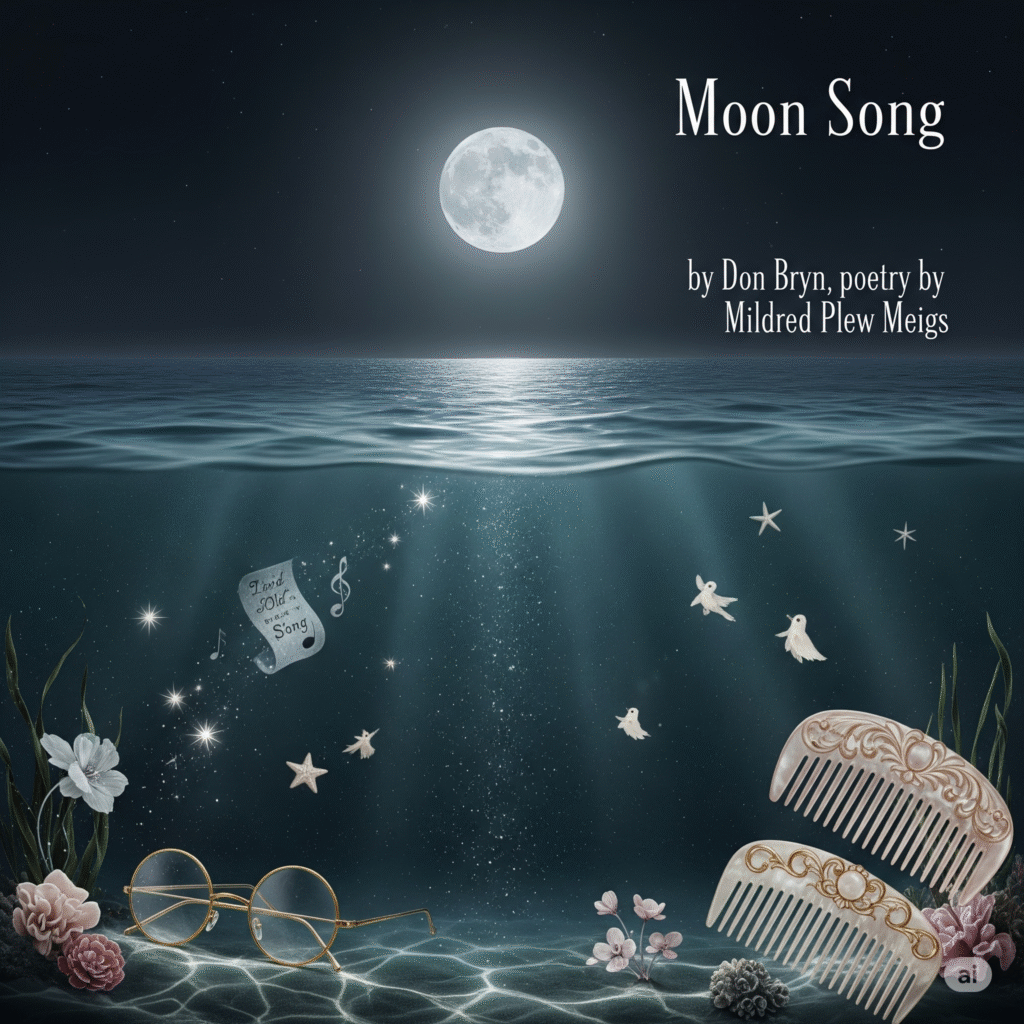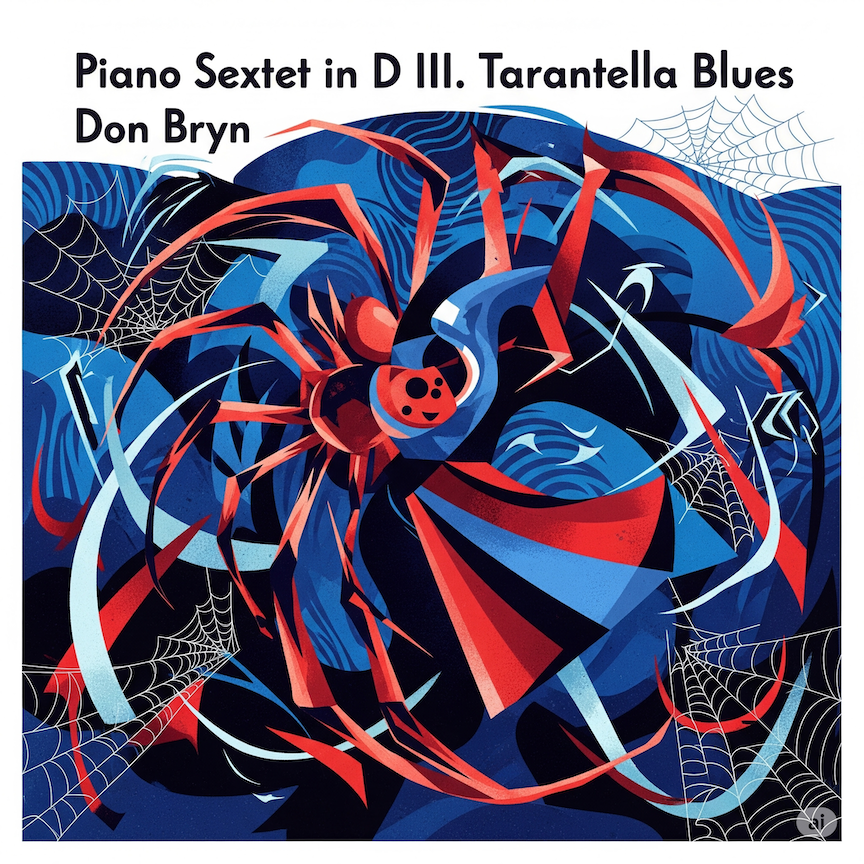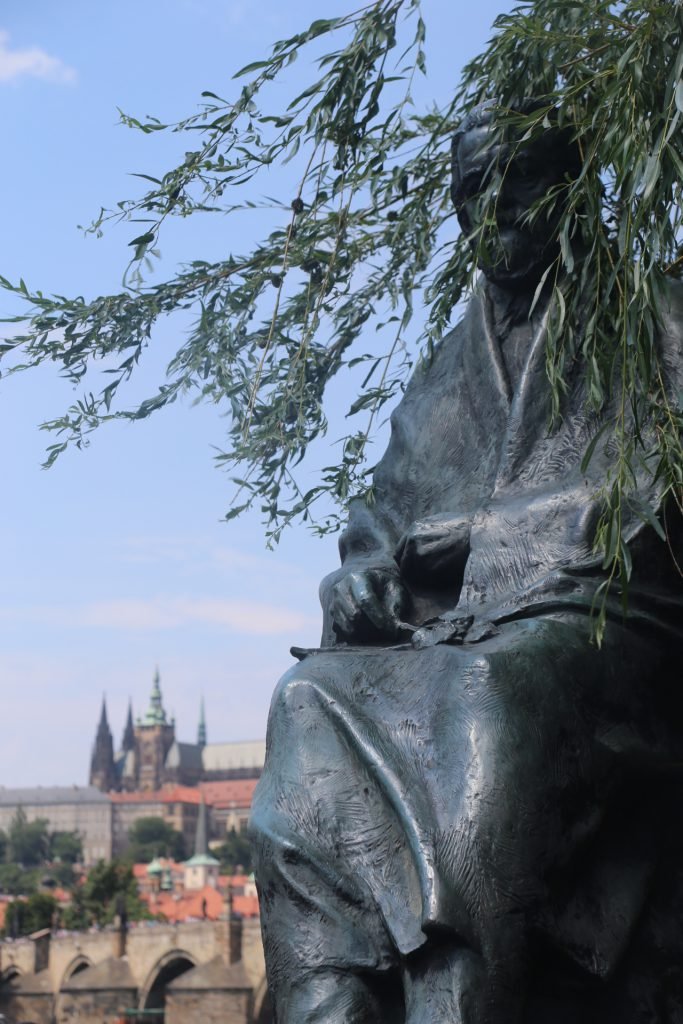
The Bedrich Smetana museum is more of a shrine, located right in the heart of tourist central at the end of the Charles Bridge. To get there from the bridge, cross through the arcade to the other side of the building, pass the “city’s largest dance club”, weave through the crowds out towards the water and there, right on the river Vltava (Moldau), is the Smetana Museum. It seems a fitting location considering the fame of his Czech nationalistic Tone Poem, “Ma Vlast,” part of which traces the route of the river through the country.
Climb the stairs and purchase tickets, leaving any bags on the coat racks in the entryway. There are free written guides in many languages and the woman behind the counter, while speaking little English, was very pleasant and helpful, digging out a 2nd English guidebook so we could each have one.

There is a nice overview in the front of the guidebook worth reading, so take the time to sit and get the overview of Smetana’s history before visiting the museum itself. Then the book can be put aside as all displays were labeled in both Czech and English.
The museum houses a piano used by Smetana, many posters of programs, photos, and even a family tree that begins with Smetana and his two wives and continues to his currently living descendents, including children born within the last ten years. There are displays revealing the original opera house as well as the new Municipal hall which Smetana was a driving force in building. There are pictures of the devastating fire and the reconstruction in which Smetana was again important.

Perhaps the most engaging part of the museum is the podium with the magic baton. By aiming the baton at one of the music stands in the room, the appropriate music will play on the museum’s sound system.

In truth, the museum is educational if you wander around the displays and read all the labels, but if you know nothing of Smetana before entering, you will only learn of his importance in Czech music by reading the first section of the guidebook. After absorbing that background, the rest of the displays help put it all in context.
I already knew that Smetana was a great nationalist composer and one of the important voices for Czech nationalism in the arts. I didn’t know that Smetana composed some of his best work–including Ma Vlast–after he went deaf. The museum didn’t provide this information, but by reading a little online I learned that he slowly became senile and incoherent leading up to his death, and that this was most likely caused by syphillus, though the official report lists his cause of death as senile dementia.
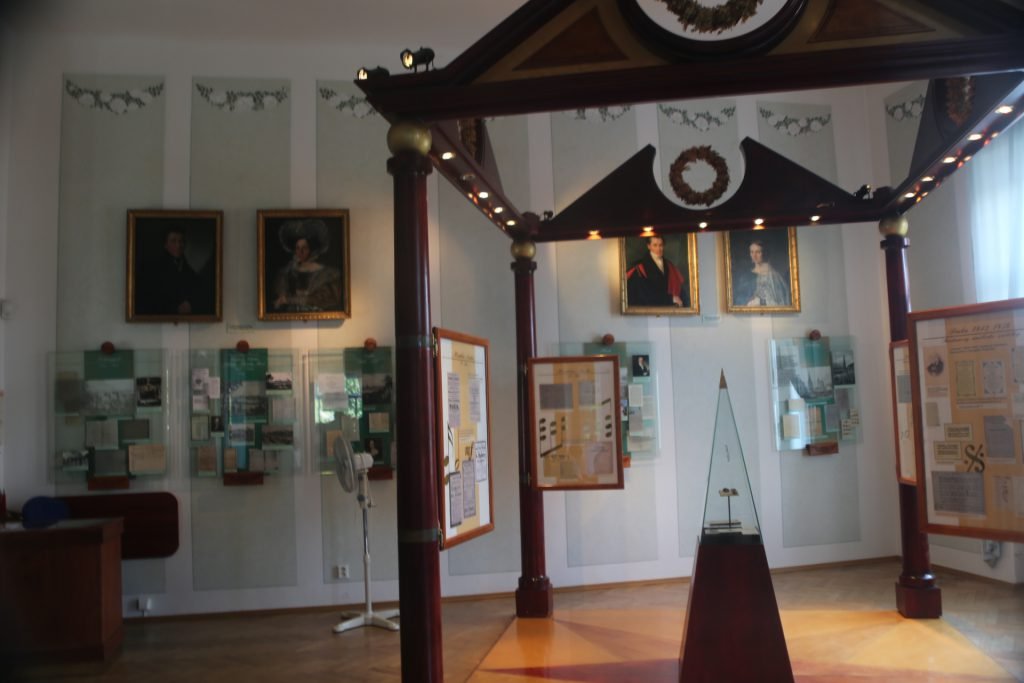
The Smetana Museum is worth a visit if you are a fan of Smetana, or if you want to learn about his significance to the Czech people and the history of Czech nationalism. Just be sure to read the guidebook first as this is the most educational source inside the museum.

